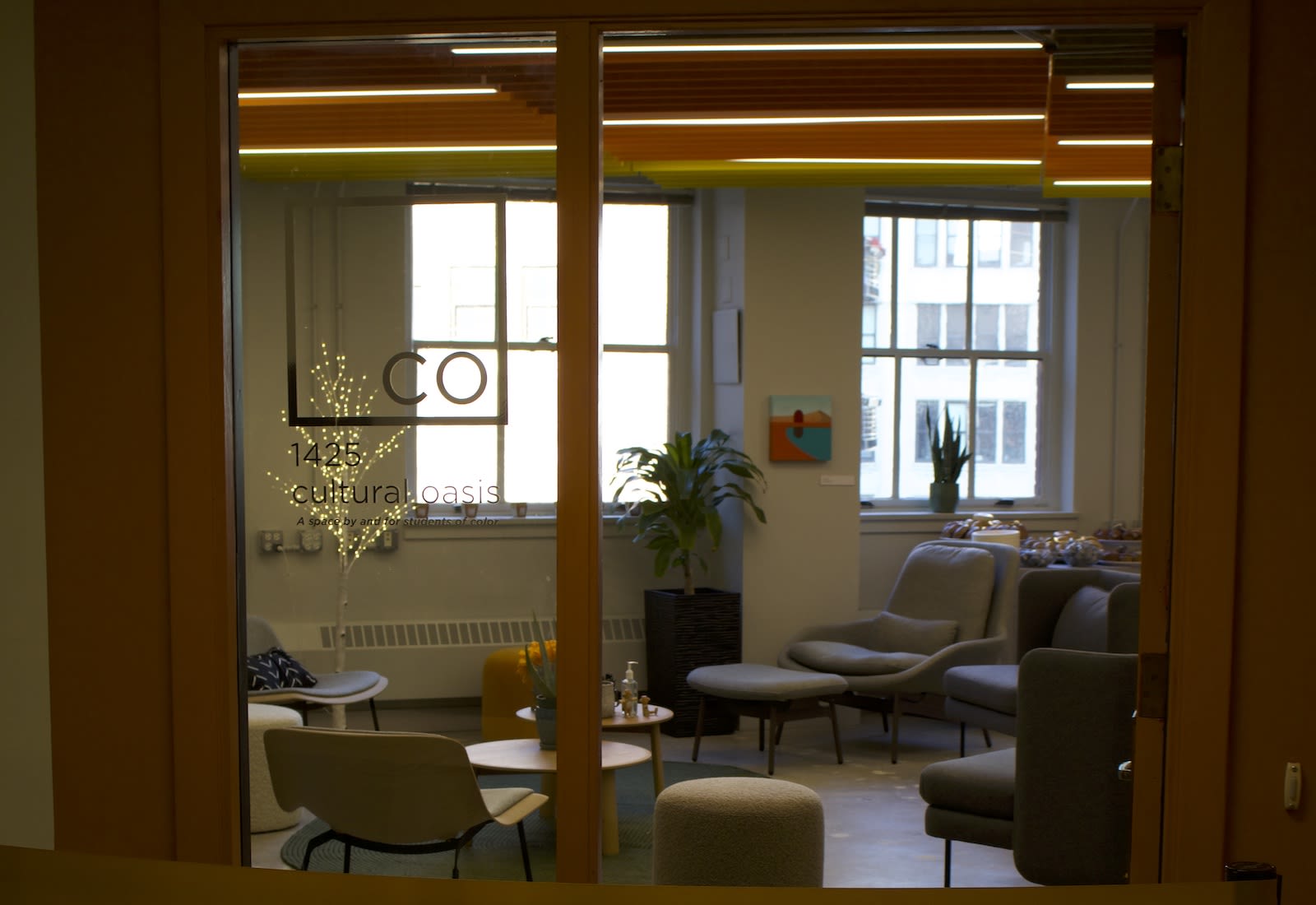In Conversation: Delinda Collier and Romi Crawford, Co-Chairs of SAIC’s Anti-Racism Committee

Cultural Oasis: A Space by and for Students of Color was unveiled on September 8, 2022.
Cultural Oasis: A Space by and for Students of Color was unveiled on September 8, 2022.
In response to the calls for racial justice in the United States and throughout the world, President Elissa Tenny launched a new Anti-Racism Committee (ARC) for the School of the Art Institute of Chicago (SAIC) in the summer of 2020. Since then, ARC and its multiple working groups proposed a set of action items, many of which have been implemented throughout the School’s policies and procedures, while others remain in development on their way to implementation. With the beginning of the new academic year, ARC co-chairs Delinda Collier, interim dean for graduate studies, and Romi Crawford, director of diversity, equity, and inclusion for academic affairs, reflected on the work of ARC and discussed what comes next for SAIC’s equity and inclusion work.
In thinking about ARC, what most impressed you about the committee's work?
Delinda Collier: The scope of it. The number of action items we passed, and how they touched so many areas. There have been improvements in recruitment and retention efforts. Enhancements to student services and co-curricular programming. The work is unfolding all over the School.
Romi Crawford: I was on sabbatical the first year of the committee, so I came to ARC mid-stream. To return to see so much action—in areas some of us thought would never change—felt great. I’m also blown away by the thoughtfulness of the process itself. There’s clearly a lot of thought and care in the action items, and seeing them get absorbed into the agenda of the institution feels like real change.
DC: And not just in ARC. So many academic and staff departments have investigated and improved their own operations, too, beyond the action items.
Speaking of the pervasiveness of ARC’s concerns, it’s notable that the committee and its working groups were composed of students, faculty, and staff. How has the work of ARC benefited from including all these constituencies?
DC: It’s been an example of solidarity throughout the School. Elissa and the members of ARC approved all the action items the working groups came up with, and nothing has been off the table for discussion. Such wide-spread participation has been key. It’s allowed us to have a really frank dialogue.
RC: There’s a multi-generational aspect of that conversation, too. Student input has been critical. They've brought forth concerns that faculty and staff might not have seen as readily.
DC: The students who joined ARC right at the beginning pushed us to include more of their peers in the process, which we then did. You feel their voices in the book club conversations and the programming, for example, the Asian-American, Asian, and Pacific Islander Access and Visibility working group put on last year.
RC: You’ll also see students’ direction in the new Cultural Oasis space dedicated to students who are Black, Indigenous, and of color, which opened in September.
In addition to the dedicated student space, what other anti-racism initiatives can SAIC anticipate?
DC: In the fall semester, ARC will consider and approve the action items coming out of our two remaining working groups, staff and Asian-American, Asian, and Pacific Islander. Then, with Elissa, we’ll steer those ideas into the appropriate areas of the School. As ARC completes its mission of initiative-setting, SAIC will still have lots of work to do.
RC: A big part of that will be inviting external expertise into SAIC through two new leadership positions. I’m on the search committee that’s been evaluating applicants to become our first ombudsperson. And, later this year, SAIC will also be searching for a new senior leadership role: the new vice president of diversity, equity, and inclusion.
Finally, what do you think we, as a School, have learned through the work of ARC?
RC: Compassion. That’s what I’ve taken from this work. Anti-racism and equity work is really hard and slow. Sometimes grueling. But I’ve learned that nobody at SAIC is purposefully saying things or setting policy to cause pain. But being compassionate with each other, and ourselves, allows us to slow down the conversation and be in a space of learning and growth.
DC: That sounds like exactly what we should be, as a School: a space of learning and growth.
{{[http://www.saic.edu/news/alums]ALUMS}} {{[http://www.saic.edu/news/facultystaff]FACULTY & STAFF}} {{[http://www.saic.edu/news/artconnectsus]ART CONNECTS US}}
